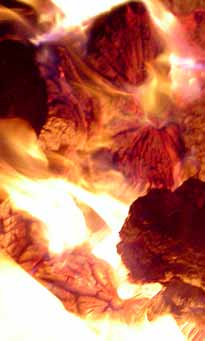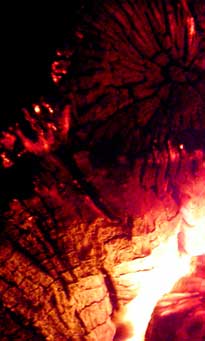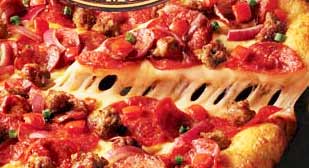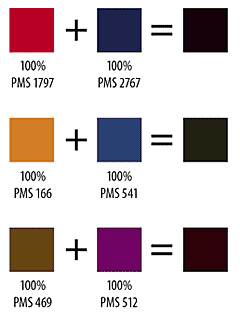I had the pleasure of interviewing the highly-regarded typographer
Mark Simonson last Friday via
iChat.
Enjoy.
KW: What is your basic background as a designer? How did you get started?
MS: I started out mainly as an art director, but I also did some illustration occasionally.
KW: Where did you get your design education?
MS: I'm mostly self-taught. I went to a two-year program at a college, but dropped out before I finished to take a job at an advertising art studio. I still need to take bowling and archery to finish my Associate Degree.
KW: LOL. Did you have any design influences growing up, how did you decide that this was the biz for you?
MS: One of my uncles was a graphic designer. I have vivid memories of the work he used to bring home from college when he was studying it. It looked like something I would like. I also had another uncle who did painting, cartooning and sign lettering. Both of them influenced me a lot when I was young.
KW: Small world. Both my parents are designers. I remember poring through the
Letraset catalog when I was a kid and playing with press-type.
KW: What was the first font you designed and do you still like it?
MS: I designed my first font when I was in college, but it was just a school assignment and has never been published. It did get me started on wanting to do type design, though. That was in about 1976. The first font of mine that was published was Felt Tip Roman in 1992.
KW: What is your design process? How does a font go from your imagination into OpenType?
MS: I'm always thinking about type ideas on some level. When I doodle, I doodle type mostly. I save everything that I put on paper and have files of type ideas going back thirty years. Sometimes, I get and idea and immediately start working on it and end up with a digital font a few months later. This was the case with Goldenbook and Mostra. Other designs are things that have been in the back of my mind for a long time and keep bubbling up to the surface, and eventually they become fonts. Coquette and Proxima Sans were like that.
KW: How much time do you spent on paper versus on the computer?
MS: I use paper mostly as a memory aid, to get the idea down before I forget it. I used to do fairly tight drawings, but I've found that it's easier and faster to tighten things up in the computer instead.
Also, sometimes I use paper to get the gesture down. One thing I can't do easily is draw something completely from scratch on-screen. It just comes out all ill-proportioned and stiff looking. So I do scan in my rough paper sketches, even though they are fairly loose. I find it's the best way to get the proportions and feeling right.
I know in my mind how the characters should look, and that's why it's better for me to work on the screen once I've got the basic idea down on paper. Less work--i.e., using Undo vs. an eraser.
KW: Follow-up question to your early influences - is there a designer who's type work has influenced you the most?
MS: That's hard to narrow down. Early on I was influenced by the ITC people--Herb Lubalin, Tony Stan, Ed Benguiat, etc. Then I saw Jim Parkinson's work for Rolling Stone. Then there was Goudy and Zapf. I guess my biggest hero is Morris Fuller Benton. His stuff continues to amaze me. I'm also a big fan of Bernhardt and Erbar. Matthew Carter is also amazing.
KW: Do you have a favorite letter to draw (or one that you find troublesome)?
MS: For some reason I find J and U boring to design. I like to do E, G, and S in the caps and a, e and g, in the lowercase.
KW: I find "s" to be the most troublesome. The lowercase "g" is one of my favorite letters to look at.
MS: S is one of the most difficult, I agree, but maybe that's why I like to draw it. It's something I've figured out how to do fairly well (I think).
KW: What was the most challenging design that you've created?
MS: Probably one that I'm working on right now, the new version of Proxima Sans. I'm expanding it to seven weights (up from three) and three different widths. It also has a much bigger character set, almost 700 characters. Add the italics, that makes 42 fonts.
KW: Ah. I just read about that on your site. How far along are you?
MS: The roman is basically done. I'm working on the italics now, doing all the fussy optical stuff to make it look correct. If you just slant it, the curves and angled strokes get distorted. So I'm going through and making it all optically correct.
KW: That's the kind of detail that separates designers like you from many others.
MS: I hope so.
KW: What environment do you feel the most creative in?
MS: When I'm supposed to be doing something else.
A lot of my font ideas arose as doodles during boring meetings I was forced to attend when I was working as an employee at various firms. It's actually harder for me to find time like that now that I am on my own.
KW: LOL. I've done that (but not nearly as well as you) Do you listen to music while you work
MS: Sometimes. I don't have a consistent audio background when I work. Sometimes I listen to music, but I find news radio works at least as well. Sometimes I don't have anything on. I can't listen to really loud music when I work. I used to share an office with an illustrator who liked to listen to speed metal at top volume while he worked. That didn't work too well.
Changing around what I listen to seems to work best for me.
KW: Are there any "young-up-and-coming" type designers that you think are doing something outstanding?
MS: Christian Schwartz is very good. He makes me wish I had got more into it when I was younger, like him. He's not exactly "up-and-coming", he's already up there. Eric Olson is another one. He lives in my area so I see him now and then. Josh Darden's work looks very promising. I heard he recently left Hoefler Frere-Jones, so I assume we'll be seeing more from him.
KW: So is
OpenType the way to go, now? Both from a font user and font designer perspective?
MS: I sure hope so. I think it's better all around for several reasons. It's cross-platform, so you don't need separate fonts for Mac and Windows. It can have much bigger character sets than PostScript Type 1 fonts. It can also have all sorts of fancy features built-in, so you don't have to have separate fonts for alternate characters, small caps, etc. Unfortunately, applications and operating systems are not quite up to speed yet, but I believe this will change (Quark is the big heel-dragger on this--next version they're promising, though). It's just a matter of time.
KW: I stopped using Quark almost a year ago. Go InDesign!
MS: From a type designer's point of view, I like the fact that I can work in PostScript bezier curves. I find TrueType curves very hard to work with. Same with hinting. TrueType hinting can produce amazing results, but it's extremely tedious to do well. PostScript hinting works well for most purposes, unless you want to optimize a font primarily for screen use, like Verdana, Georgia or Arial.
KW: One last question, what are the best resources for someone to learn the art of type design?
MS: Leslie Cabarga's books (Logo, Font, & Lettering Bible and Learn FontLab Fast) are good introductions. Bringhurst's The Elements of Typographic Style is a good reference for anything to do with type. Letters of Credit, by Walter Tracy, is a classic book about designing type. Type specimen books are pretty important. You can never have too many of those. (At least I can't.)






